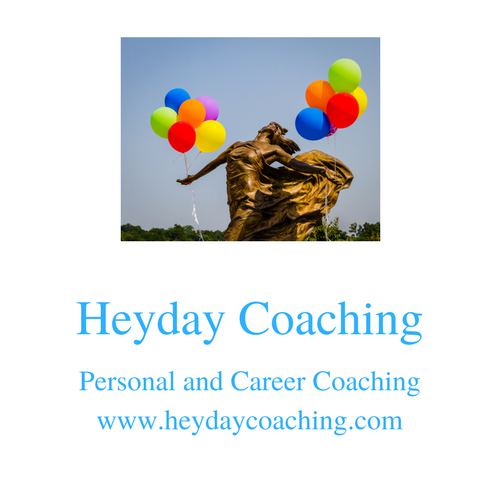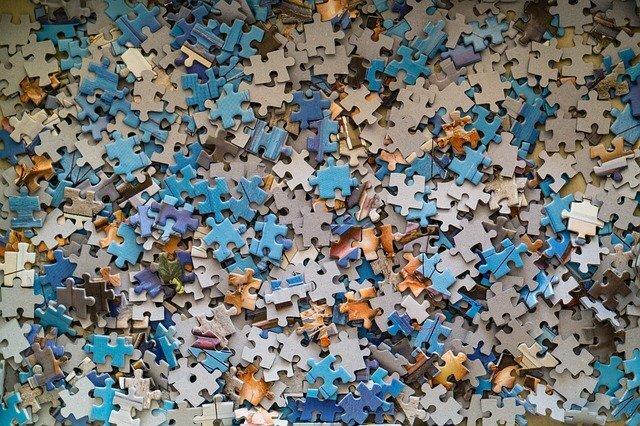Image by Christos Giakkas from Pixabay
My husband and I could easily become jigsaw puzzle junkies. By that, I mean that we could easily become addicted to working them, ignoring everything else in our lives. We only allow ourselves to work two or three a year, usually on cold or rainy weekends, because once we start working on one, we work compulsively until it’s finished.
The last time we worked a puzzle, I got to think about all the things I’ve learned about life from jigsaw puzzling.
First, you have to start with the boundaries—the outside pieces. You can work a puzzle without locating the outside pieces, but it will take much much longer, and it will prove to be much more frustrating if you don’t have that border providing you with a rough map to get you started. Sometimes, Chuck and I get a couple of those border pieces in the wrong spots and have to adjust things partway through, but without putting that border in place, we’d spent a lot of time navigating with no real map.
Second, when you’re feeling stuck, you have to look at things from a new angle—literally. This applies to so many aspects of puzzling. Sometimes, you have to rotate a single piece again and again until you get it to the right orientation. Other times, it’s your own body that needs to rotate. If you’re looking at the puzzle from the bottom, it often helps to move around the table and look at it upside down or from the side. You’ll see things from a slightly different perspective, and you’ll likely be able to find locations for pieces that you couldn’t make fit before.
Third, sometimes, you need to look at the shape of the missing piece rather than the image. If the missing piece has an irregular shape, for example, looking for that shape rather than the piece with gray and white cat fur might be the fastest way to locate the piece. Maybe you need a piece that has an “outie” on all four sides. Or a piece that has unusual curves. My friend Adrienne, another avid puzzler, often says, “I’m looking for the piece that is whompy-jawed.” I cannot tell you in words what “whompy-jawed” looks like, but if I set out to find the whompy-jawed puzzle piece, I usually locate it quickly.
Fourth, it often helps to turn your conscious brain off. When I’m feeling a bit stuck, I’ve learned to do this thing where I just sort through the pieces randomly. And likely as not, I’ll be spot just the right piece for an empty spot. Sometimes, I’ll do that a half dozen times in quick succession, just by shuffling the pieces that are still left in the box and letting my eyes pass over them quickly. My unconscious brain has learned to identify the patterns of the puzzle.
And finally, sometimes the key is to walk away and do something else. Get a snack, read a book, make dinner, take a shower. The next time I walk by the puzzle, I’ll probably spot the piece I searched for fruitlessly before I took the break.
Like I said, there are so many ways the lessons from puzzling can be applied to other puzzling things in my life. Whenever I start anything new, it helps to have a rough outline of where I want to go, even if I have to rearrange some of those misplaced border pieces part of the way through the process. This happens most often when I am writing. It helps to have a rough outline even though I’m likely to do some small or large revisions to that outline. When I get stuck on what to write next, it helps to change my perspective and look at things from a new angle. It helps to think of the shape of the parts of the project, not just the final picture. It also helps to turn my conscious brain off and let my mind wander from time to time. In the process, I can see how seemingly random patterns fit together. And finally, sometimes the most important thing I can do is take a break. While I’m in the shower or reading a novel, my unconscious brain is working through the places where I’m stuck.
When have you applied to the lessons of puzzling to your own life?


